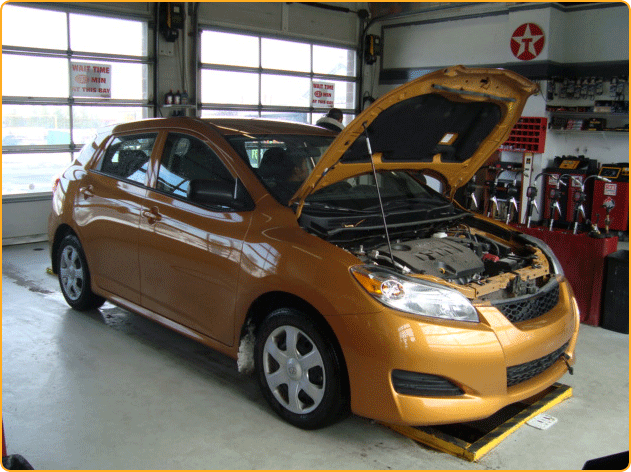The aim of this factsheet is to make you better informed about car servicing and to explain the different kinds of services available. And to help you know what type of service to choose from. It’s not as complicated as it sounds, so read on to find out more…
Introduction
A car service consists of a number of checks carried out at a set time or after a number of miles have been travelled. Generally, the service intervals are determined by the car manufacturer, and many modern vehicles today display a warning light on the instrument panel to signal when a service is due. In some cases the motorist is warned many miles beforehand, giving plenty of time to arrange for a service.
Upon completion of every car service, the event is recorded in a service book which is rubber stamped with the current mileage at the time of service and the date on which the service took place. Always keep your car service book in a safe place, it keeps track of where you are servicing-wise, and a fully stamped service book will help re-sell your car at a later date.
What checks take place in a car service?
Maintenance checks commonly carried out during a motor vehicle service include:
Drain and change the engine oil
Replace the oil filter
Replace the air filter
Check windscreen wipers
Check and advise on oil leaks
Check the radiator and coolant hoses for condition
Check coolant levels and top up
Check brake fluid and top up if required
Check level and refill power steering fluid
Check steering/suspension components for wear and corrosion
Check for transmission oil leaks
Check condition of clutch fluid level
Check condition of clutch cable
Grease and lubricate components
Inspect and replace the timing belt if needed
Check tyre condition and tread depth
Reset vehicle service light
Garages also advise areas to watch out for, such as low tyre tread, worn brake disks and may make you aware of mechanical parts that may, over time, make the car un-roadworthy.
What types of service are there?
Generally there are 3 types of service:
Major Service
Full Service
Interim Service
Major Service
What: The most detailed service schedule of the three is the Major Service where practically every aspect of your car is checked, with parts being replaced where applicable. It’s also the most expensive service.
When: This is usually performed every 12 months or 12,000 miles, whichever comes soonest. For some cars, the manufacturer has set the Major Service to every 20,000 miles so it’s always best to check with the car manufacturer. The service book also gives a clue to the occurrence of the service, but when in doubt check with the car manufacturer.
Full Service
What: This service is fairly detailed, but not as detailed as the Major Service described above. In some cases, there are just a few items that are excluded such as suspension, testing the effectiveness of the starter motor and checking the headlamp alignment, among others. It’s a slightly cheaper option than the Major Service, as slightly fewer checks are performed.
When: Because the checks are almost as detailed as the Major Service, we’d recommend having a full service every 12 months or 12,000 miles whichever comes soonest. If you choose this option, then it’s good to select the Major Service every other year, just to keep your car at optimum levels.
Interim Service
What: This is the least detailed of all the services, and it should be seen as a stopgap solution. The checks that are usually excluded from this service are: checking battery condition and air filters and air conditioning, checking seat belts, checking spark plugs, testing the effectiveness of the starter motor, visually checking brake discs and cylinders for wear and tear, checking gearbox fluid level and a few other checks.
When: If you have the Major or Full Service every year, then you may not require an Interim Service. Manufacturers sometimes recommend an Interim service every 6 months if your annual mileage is high, in between your Major or Full Car Service if your annual mileage is low. If cost is an issue, the interim service is the cheapest service to have, but it should not be seen as a way to replace, in the long term, the Full or Major Service.
In Summary
Car servicing is an essential part of keeping your car roadworthy and in good condition. It also helps maintain the re-sale value of your car when you come to sell it on. Cut corners on car servicing and you may find yourself spending more money in the long run on breakdown service, or worse, the car not starting. If cost is an issue, the interim service may be a good stop gap, but should always be followed in the next 6-8 months or 6,000 miles later with a Full/Major Service to keep your car in top condition.
Finding the best car servicing prices
Did you know car servicing isn’t as expensive as you think? Simply go to tootcompare.com to compare car servicing prices and book a great garage near you.
Did you know?
The dashboard was originally a piece of wood attached to the front of a horse-drawn carriage that would prevent mud from splattering the driver as the horse galloped.

Which Service Should I Have For My Car?
by
Tags:

Leave a Reply